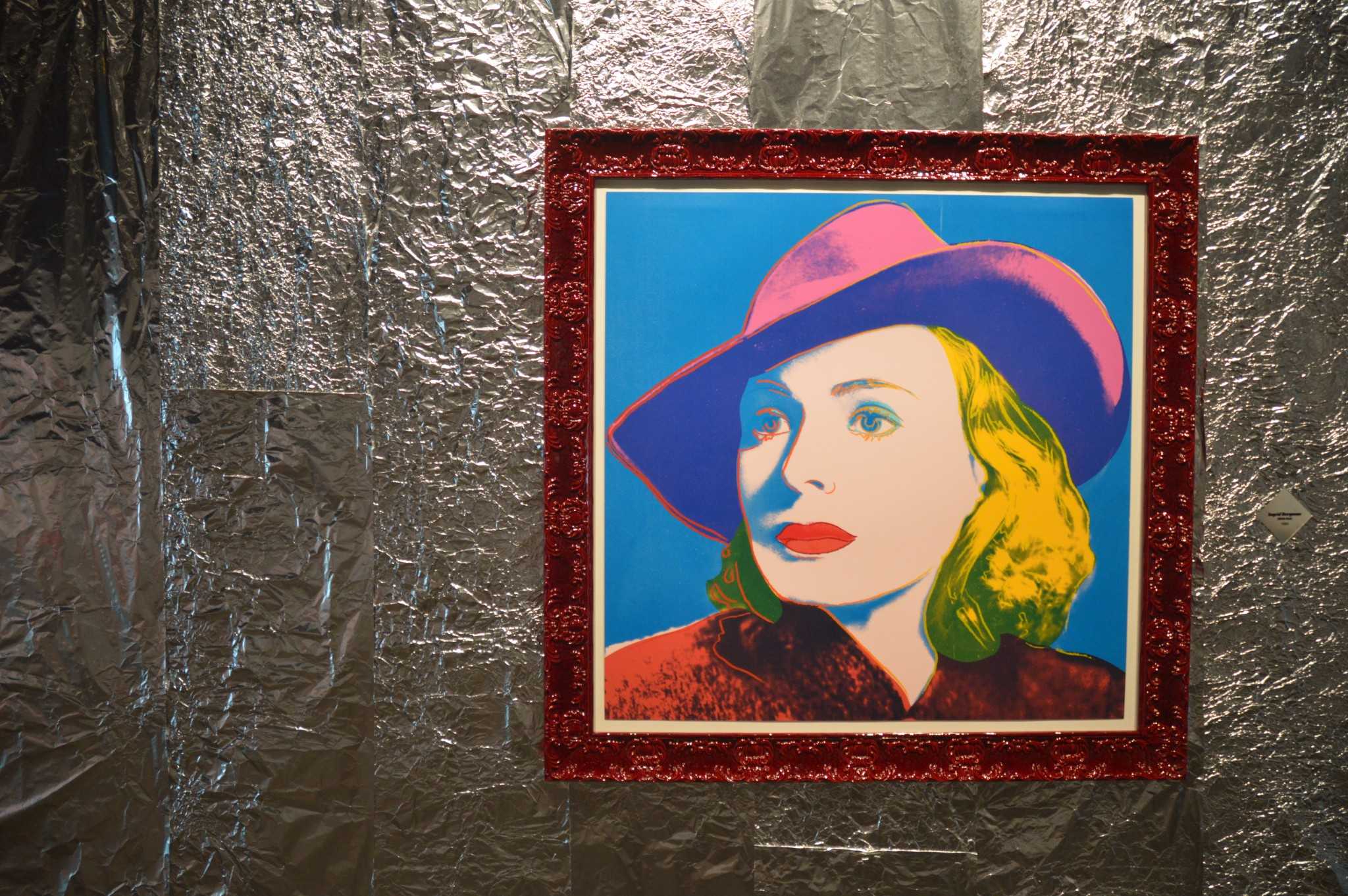 Hung on walls covered in foil to a soundtrack that included David Bowie and Lou Reed classics, six recent acquisitions to the Turchin Center for the Visual Arts permanent collection were unveiled in a space usually reserved for visiting installations. The pieces — out-of-edition Andy Warhol screen-prints — are being highlighted in a space meant to mimic Warhol’s New York studio.
Hung on walls covered in foil to a soundtrack that included David Bowie and Lou Reed classics, six recent acquisitions to the Turchin Center for the Visual Arts permanent collection were unveiled in a space usually reserved for visiting installations. The pieces — out-of-edition Andy Warhol screen-prints — are being highlighted in a space meant to mimic Warhol’s New York studio.
“Coined the ‘Silver Factory’ by its frequent visitors, the live/work/party space was decorated by Warhol’s friend Billy Name,” said Mary Anne Redding, curator for the Turchin who joined the staff in September. “The entire loft, even the bathroom, was covered in tin foil, silver paint and silver balloons.”
These pieces are the second donation to the university from The Andy Warhol Foundation for the Visual Arts. The art, received as a donation in 2013, consists of the six out-of-edition silkscreen prints included in “Quicksilver: New Acquisitions from the Andy Warhol Foundation.” The first donation of 158 Polaroid prints and silver gelatin photographs resulted in the Turchin’s 2009 exhibition “Andy Warhol, A Photographic Legacy: Recent Gifts to the Turchin Center Permanent Collection.”
Out-of-edition prints are extra pieces used to test out the printmaking process. They are usually not sold, and as a result are donated to schools and other destinations.
“Everything [in the Quicksilver display] is designed so that the viewer can see themselves in the artwork — you can walk around the room and see it from different perspectives, you can see yourself in the mirrors — the idea is that whether your making art or looking at it, you’re part of the process,” Redding said.
Kyle Hazard, exhibitions assistant and senior art management major, was a part of the four-person team responsible for creating the space. He had to calculate surface area and order wholesale boxes of foil, supplemented by Reynolds Wrap and aluminum tape, after originally planning to use mylar to cover the space.
“We were trying to create more of an environment than just an exhibition space,” he said.
Other elements in the room – furniture, mirrors, a shag carpet repurposed from the conference room – are designed as sensory elements and clues into the time period.
“We wanted to create an environment that emulates that, honors that, and talks about the late ‘60s and early ‘70s through the artwork and the music and through the vibe in here,” Redding said.
Hank Foreman, director and chief curator at the Turchin Center, began his relationship with the Andy Warhol FVA when he first applied for a grant to support the 1995 exhibition “Views From Ground Level: Art and Ecology in the Late Nineties.”
While the grant was not funded, in 2004, as the university was building the West Wing of the Turchin and preparing the opening of the entire facility, he applied for support to present a sculpture exhibition series titled “Redefining Space.” Representatives from The Andy Warhol FVA visited in Boone and the Turchin was awarded a $45,000 grant.
Although gallery heads consider the Turchin to hold more regional than national importance compared with other galleries in the state, ironically, along with the Polaroids, Appalachian now has more Warhol pieces than most universities.
These works provide a contemporary context for the other artists in the collection.
“It’s fun to get that in Boone and it’s fun to say that I worked with a Warhol,” Hazard said
“Quicksilver: New Acquisitions from the Andy Warhol Foundation” is currently on view at the Turchin Center until August 8.
As for the cleanup? Hazard said the student assistants are planning on making a giant wad of leftover foil to compete with the Schaefer Center crew’s expanding tape ball.
Story: Lovey Cooper, Senior A&E Reporter
Photo: Gerrit Van Genderen, Managing Editor

